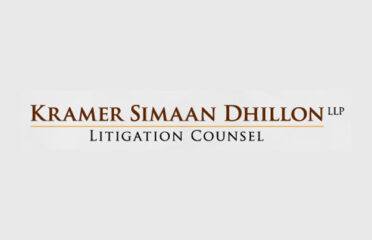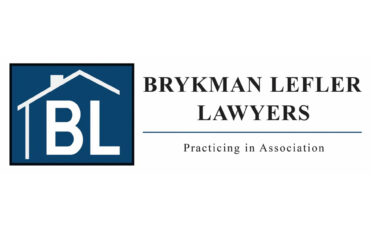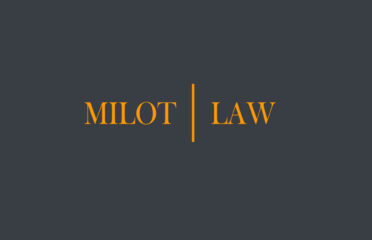What is Bankruptcy Law in Canada?
Bankruptcy in Canada is a legal process governed by the Bankruptcy and Insolvency Act (BIA) that provides debt relief to individuals and businesses who can no longer pay their debts. Unlike the U.S. system with multiple “chapters,” Canada has a streamlined approach focused on either bankruptcy or alternative solutions like consumer proposals.
This comprehensive guide explains how bankruptcy works in Canada, including eligibility requirements, the step-by-step process, impacts on credit, and alternatives to consider. We’ll also address common misconceptions and provincial differences in bankruptcy rules.
1. How Bankruptcy Works in Canada
Key Features of Canadian Bankruptcy
-
Federal Oversight: Regulated by the Office of the Superintendent of Bankruptcy (OSB)
-
Two Main Options: Bankruptcy or Consumer Proposal
-
Licensed Professionals: Only Licensed Insolvency Trustees (LITs) can administer bankruptcies
-
Automatic Stay: Immediate protection from creditors upon filing
Basic Bankruptcy Statistics in Canada
-
Approximately 100,000 Canadians file bankruptcy or proposals annually
-
Average bankruptcy lasts 9-21 months
-
Typical discharge erases most unsecured debts
2. Types of Debt Relief Under Canadian Law
A. Personal Bankruptcy
-
Process: Surrender non-exempt assets in exchange for debt discharge
-
Duration: First-time filers typically discharged in 9 months (21 months if surplus income)
-
Cost: Starts around $1,800+ (varies by province/trustee)
B. Consumer Proposal
-
Alternative to Bankruptcy: Repay portion of debts over up to 5 years
-
Benefits: Keep assets, less credit damage than bankruptcy
-
Acceptance: Requires creditor approval of repayment plan
C. Division I Proposal (For Larger Debts)
-
For debts over $250,000 (excluding mortgage)
-
More complex than consumer proposals
3. The Bankruptcy Process: Step-by-Step
Step 1: Consultation with Licensed Insolvency Trustee (LIT)
-
Free initial assessment
-
Review of all debt relief options
Step 2: Filing Assignment in Bankruptcy
-
Submit paperwork to OSB
-
Automatic stay takes effect (stops collections)
Step 3: Creditors Meeting (If Required)
-
Rare for simple bankruptcies
-
More common with high assets/income
Step 4: Fulfill Bankruptcy Duties
-
Attend financial counseling sessions
-
Submit monthly income/expense reports
-
Make surplus income payments (if applicable)
Step 5: Discharge
-
First-time bankrupts: 9-21 months
-
Second-time bankrupts: 24-36 months
4. What Happens to Your Assets?
Exempt Assets (Protected in Bankruptcy)
| Province | Home Equity | Vehicle | RRSPs | Tools |
|---|---|---|---|---|
| Ontario | $10,783+ | $6,600 | Most* | $11,300 |
| BC | $12,000 | $5,000 | Most* | $10,000 |
| Alberta | $40,000 | $5,000 | Most* | $10,000 |
*Except contributions in last 12 months
Non-Exempt Assets (May Be Sold)
-
Luxury items (boats, ATVs)
-
Tax refunds for pre-bankruptcy years
-
Investments beyond RRSP/TFSA limits
5. Impact of Bankruptcy in Canada
Credit Consequences
-
Credit Report: R9 rating for 6-7 years after discharge
-
Rebuilding: Possible to get secured credit card within 1-2 years
Employment Considerations
-
Generally doesn’t affect most jobs
-
Exceptions: financial sector, some government positions
Ongoing Obligations
-
Certain debts survive bankruptcy:
-
Student loans (<7 years old)
-
Child/spousal support
-
Court fines
-
6. Alternatives to Bankruptcy in Canada
Comparing Debt Relief Options
| Option | Duration | Credit Impact | Asset Protection |
|---|---|---|---|
| Bankruptcy | 9-21 months | Severe (6-7 years) | Partial |
| Consumer Proposal | Up to 5 years | Moderate (3 years after completion) | Full |
| Debt Management | 3-5 years | Minor | Full |
| Debt Settlement | Varies | Significant | Risk of lawsuits |
7. Provincial Differences in Bankruptcy Rules
Key Variations Across Canada
-
Asset Exemptions: Each province sets its own thresholds
-
Surplus Income Standards: OSB guidelines vary by family size/income
-
Court Procedures: Some provinces require court appearances
Quebec-Specific Considerations
-
Civil code system (vs. common law elsewhere)
-
Different property exemption rules
-
Bilingual documentation requirements
8. Myths vs. Facts About Canadian Bankruptcy
Myth: “I’ll lose everything in bankruptcy.”
Fact: Most keep essential assets through provincial exemptions.
Myth: “Bankruptcy means I can never get credit again.”
Fact: Many qualify for credit within 2-3 years post-discharge.
Myth: “Only deadbeats file bankruptcy.”
Fact: Most filers are ordinary Canadians facing job loss, illness, or divorce.
9. When to Consider Bankruptcy
Bankruptcy may be appropriate if:
✅ Your debts exceed $10,000+ with no repayment ability
✅ Collection calls/garnishments are overwhelming
✅ You have few non-exempt assets to protect
✅ Other debt solutions have failed
Warning Signs You Need Help:
-
Using credit cards for basic living expenses
-
Minimum payments exceeding 20% of take-home pay
-
Creditor lawsuits or wage garnishments
10. How to Rebuild After Bankruptcy
Financial Recovery Steps
-
Review Credit Reports: Ensure discharged debts show $0 balance
-
Secured Credit Card: Helps rebuild credit history
-
Budgeting: Follow trustee’s financial counseling advice
-
Savings: Establish emergency fund to avoid future debt
Conclusion: Making an Informed Decision
Bankruptcy in Canada offers a legal fresh start but requires careful consideration of all options. By understanding the process, exemptions, and alternatives, Canadians can make empowered financial decisions during challenging times.






















